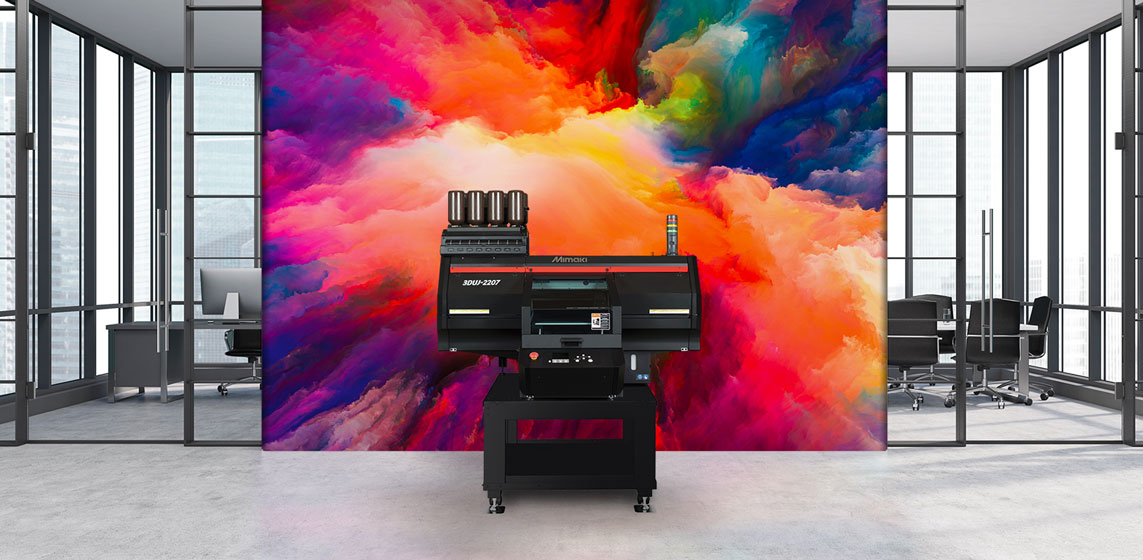
Educational facilities are among the fastest-growing adopters of 3D printing. There was an impressive 5.4% to 11.6% jump in market share between 2011 and 20211. They are overtaking other traditional applications, such as cosmetic models, jigs and fixtures. Across a wide range of academic fields, such as medicine, art, design and architecture, students and researchers increasingly use this technology. It helps to create models and prototypes which assists with their academic endeavours. In particular, material jetting 3D printing technology is making a name for itself within the sector. It is known for producing highly detailed prototypes, models and figures.
Material Jetting: More Colours, More Detail
While material jetting makes up a small share of 3D printer sales, it isn’t a technology to be overlooked. This is when compared to other printing methods like material extrusion (FDM) and powder bed fusion (MJF or other laser-based processes). Its ability to produce bright colours, incredible accuracy and fine detail in the final 3D prints makes it a go-to solution. It is ideal for prototyping, art, architectural and educational models.
Full-colour 3D printers from Mimaki, the 3DUJ-2207 and the 3DUJ-553, both utilise the material jetting method. A piezoelectric printhead travels over the build platform, depositing hundreds of tiny droplets of photopolymer to the desired locations. The material is then cured by a UV LED light. This allows less material warping and more control for complex designs over traditional UV bulbs. The process repeats until the whole part is complete. It is then submerged in the cleaning unit to remove any support material. This results in 3D prints with vibrant, photorealistic colour.
As the only 3D printers on the market with the ability to accurately print in 10 million colours, including transparent up to 1200 dpi, the 3DUJ Series can create highly detailed, full-colour 3D prints. These abilities, alongside its office-friendly size and low noise level, have made these machines the perfect high performing models. The rapidly growing 3D printing market has greatly benefited from these features.
The Educated Choice
We have already seen examples of Mimaki’s 3D printers’ accuracy and range of colours being used to full effect in universities. The collaboration between Monash University and Erler Zimmer led to the development of anatomically accurate 3D-printed medical models. These models address the limitations of cadavers in education. Initially facing challenges with the fragility and colour reproduction of medical models, the 3D printing industry saw a significant breakthrough. This occurred with the Mimaki 3DUJ-553 colour 3D Printer. The printer accurately creates realistic, detailed models with transparent parts to see internal structures. Reliance on cadavers in universities significantly restricts hands-on, interactive teaching opportunities, particularly when it comes to rare pathologies. The ability for universities to produce the desired 3D models as needed opens up significant learning opportunities for students and medical professionals alike.
In Europe, the printer’s capabilities have also attracted the attention of a team of doctors and researchers from the University of Florence. Facilitating cost-effective solutions and enhancing surgical training and simulation, the technology was also used for a range of anatomical models. It reached a previously unattainable degree of colour fidelity and realistic appearance. Meanwhile, Biologic Models has carved out a niche in creating precise and vibrant colour 3D models of proteins for research facilities and collectors. They use the 3DUJ-553 in conjunction with clinical research and x-ray crystallography protein data.
View our 3D Academy Pack offer:
In New Zealand, colour 3D printing has been taken beyond the medical field. The University of Auckland‘s Creative Design and Additive Manufacturing Lab (CDAML) uses the Mimaki 3DUJ-553 for vibrant, accurate colour printing in projects ranging from cultural preservation to surgical aids. Initially exploring powder-based printers, the lab shifted to the 3DUJ-553 due to its superior colour palette and durability. This printer has helped to transform how students engage with history, engineering, art and medicine.
The Perfect Tool for the Model Student
Imagine students worldwide crafting realistic anatomical models, bringing historical artefacts back to their former glory, or architecting the cities of tomorrow—all with cutting-edge full-colour 3D printing technology. In the educational field, 3D printing can equip the professionals of today and tomorrow with the tools they need to enhance their skills better.
1. Wohlers Report, ‘3D Printing Applications 2011 Wohlers Report’ and ‘3D Printing.






